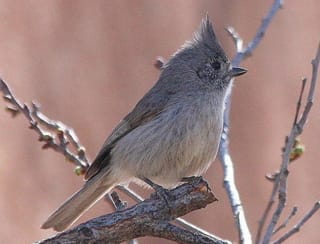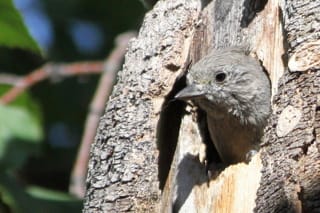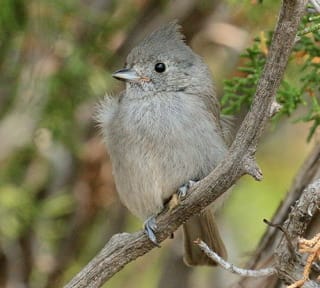Initially this guide displays common birds of all types that are flying right now in our area. Use the selectors below to view rare birds, view birds flying any time, restrict the output to a certain shape of bird, or search by name.
New Mexico is on the western edge of the Central Flyway which is one of the major migration pathways between north and south for birds traveling between breeding and wintering grounds along the Rocky Mountains. This has resulted in the state having an incredible diversity of birds with over 550 different species reported. A little more than half of this number are sighted annually on the Pajarito Plateau. Some of these birds are full-time residents, some migrate here for a few weeks or months, and other are only seen briefly as they pass through the region.
This guide features many of the birds known to frequent Los Alamos county by when they are likely to be seen in the area. You can get additional information on local birds by joining PEEC Birders or going to the eBird website. eBird also includes lists of rare bird sightings and birding hot spots.
Bird References
Birdweb
Cornell Lab of Ornithology
eBird
eNature
Institute for Bird Populations
National Audubon Society
New Mexico Ornithology Society
What Bird
xeno-canto
Subject Area Experts (all guides)
Steve Cary (butterflies)
Beth Cortright (insects)
Terry Foxx (invasive plants)
Leslie Hansen (mammals)
Richard Hansen (fish, mammals)
Dorothy Hoard (butterflies, trees)
Chick Keller (flowers, herbarium)
Shari Kelley (geology)
Kirt Kempter (geology)
Garth Tietjen (reptiles)
David Yeamans (birds)
Web Development and Content Management
Pat Bacha
Jennifer Macke
Graham Mark
Akkana Peck
Contact
Please contact us for local nature questions and sightings. We welcome comments, corrections, and additions to our guides.
For more information about local nature, please visit our Nature Blog or subscribe to PEEC This Week.
Make Selection
 Photo: adult by J.N. Stuart  Photo: adult by David Yeamans  Photo: fledgling by Bob Walker |  Juniper TitmouseJUTI (Baeolophus ridgwayi, Baeolophus griseus)Family: Paridae (Chickadees and Titmice) Size: 5.8 in (15 cm) Flies: Jan 01 - Dec 31 Morphology: both males and females have gray bodies, paler bellies, dark eyes, short bill, and pointed crest Status: native; common Food source: mainly insects and some spiders but also eats nuts and seeds Habitat: pinyon-juniper woodland, oak or pine woodlands Juniper Titmice will come to bird feeders but can often be seen hopping around on tree branches hunting for food. Sometimes they will even hang upside down while searching for insects. In addition, they are capable of opening nuts and acorns by pounding them with their bills while holding the nuts with their feet. During winter, titmice tend to congregate into roaming groups. Nests are usually located in a hole or some other type of natural cavity in a tree. However, Juniper Titmice will also use nest boxes. The nest is filled with grass, weeds, and other fibers and then lined with feathers or animal hair. Females are responsible for the incubation of the eggs which hatch in a little over 2 weeks. Both parents then fed the young until they leave the nest in another 2 to 3 weeks. Info Photos Distribution Frequency |
